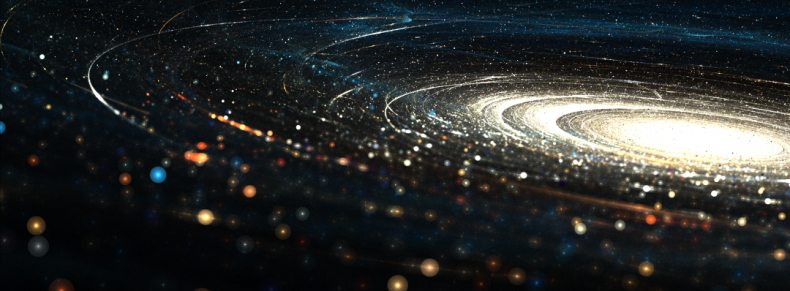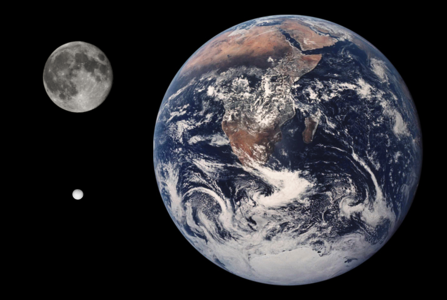We Know All About The Speed Of Light, But What Is The Speed Of Dark?
Posted on Jan 25, 2017January 25, 2017
I’ve always enjoyed Terry Practchett books and the Discworld series as he had a way to bring characters to life that many writers just don’t have. There isn’t much in the way of science in the books, real-life science, in any case, but every now and then I find a little something that gets me interested. I recently read Reaper Man and a quote in the book caught my eye:

“Light thinks it travels faster than anything but it is wrong. No matter how fast light travels, it finds the darkness has always got there first, and is waiting for it.” – Terry Pratchett
Does ‘dark’ travel and is ‘dark’ a thing? Or is it just the absence of light? Elon Musk had a brilliant way of explaining how he conquered his own fear of the dark:
“When I was a little kid, I was really scared of the dark. But then I came to understand, dark just means the absence of photons in the visible wavelength–400 to 700 nanometers. Then I thought, well, it’s really silly to be afraid of a lack of photons. Then I wasn’t afraid of the dark anymore after that.”
First of all, we should understand the concept of the speed of light. In 1676, Danish astronomer Olaus Roemer concocted some experiments and cooked up a theory that the speed of light is a measurable factor. Although it wasn’t until Albert Einstein came along and practically wrote the laws of physics that we started to fully understand the concept of how light moves. What about darkness? Is darkness merely an absence of photons or is it a tangible product that moves in a similar way to light?
So I did some research and found some answers that have been given by people with more abbreviations after their name and more scientific understanding than me.
George Musser
Contributing editor for Scientific American and Nautilus magazines
The speed of dark? The easy answer is that it’s just the speed of light. Switch off the sun and our sky would go dark eight minutes later. But easy is boring! For starters, what we commonly call the “speed of light” is the speed of propagation, and that’s not always the deciding factor. A shadow swoops across the landscape at a speed governed by the object that casts it. For instance, as a lighthouse beacon rotates, it lights up the surroundings at regular intervals. The ground speed of its shadow increases with distance from the lighthouse.
And what about speed in general—is there such a thing? It presupposes a framework of space, and scientists see phenomena in quantum physics where spatial concepts seem not to apply—suggesting, to some, that space is derived from a more fundamental level of reality where these is no such as thing as position, distance, or speed. It must be the level that Steven Wright operates on.
Neil DeGrasse Tyson
(No introduction needed)
The speed of dark… Consider dark getting erased by light. The light erases it at the speed of light so the speed of dark would be negative the speed of light. If light is a vector, it has magnitude and direction, so… to call it negative means it’s in a negative direction. The dark is receding rather than advancing. I’d call it negative the speed of light.
David Reitze
Executive Director of LIGO Laboratory at the California Institute of Technology
Basically, it depends on whether you’re the matter being consumed by the infinite abyss of a black hole or you’re far enough away to be a dispassionate observer watching someone else falling into the infinite abyss. If you happen to be the unlucky matter falling in, the speed is potentially very large, in principle approaching the speed of light.
If you’re the observer and you’re far enough away, the speed with which matter is consumed is dramatically slowed down due to an effect known as gravitational time dilation—clocks run slower in gravitational fields, and much slower in the immense gravitational fields near the event horizon of the black hole. By ‘far enough away’, I mean that in your local reference frame, your stationary relative to the black hole (i.e, not getting sucked in) and your local clock is not affected by the gravitational field of the black hole. In fact, to the far away person it will take an infinite amount of time for something to travel to the event horizon of the black hole.
Niayesh Afshordi
Associate Professor of Astrophysics and Gravitation in the Department of Physics and Astronomy at the University of Waterloo.
I believe the speed “of dark” is infinite! In classical physics, the vast darkness of space could be just empty vacuum. However, we have learnt from quantum mechanics that there is no real dark or empty space. Even where there is no light that we can see, electromagnetic field can fluctuate in and out of existence, especially on small scales and short times. Even gravitational waves, the ripples in the geometry of spacetime that were recently observed by the LIGO observatory, should have these quantum fluctuations.
The problem is that the gravity of these quantum ripples is infinite. In other words, currently there is no sensible theory of quantum gravity that people could agree on. One way to avoid the problem is if the speed “of dark”, i.e. the quantum ripples, goes to infinity (or becomes arbitrarily big) on small scales and short times. Of course, that’s only one possibility, but is a simple (and my favourite) way to understand big bang, black holes, dark energy, and quantum gravity.
What do you think about these views?







